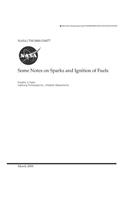
Some Notes on Sparks and Ignition of Fuels
Series:
This report compliments a concurrent analysis of the electromagnetic field threat to the fuel system of a transport aircraft. The accompanying effort assessed currents, voltages and power levels that may be induced upon fuel tank wiring from radio transmitters (inside and outside the aircraft). In addition to this, it was also essential to determine how much voltage, current, or power is required
NaN
VOLUME
English
Paperback

This report compliments a concurrent analysis of the electromagnetic field threat to the fuel system of a transport aircraft. The accompanying effort assessed currents, voltages and power levels that may be induced upon fuel tank wiring from radio transmitters (inside and outside the aircraft). In addition to this, it was also essential to determine how much voltage, current, or power is required to create a fuel-vapor ignition hazard. The widely accepted minimum guideline for aircraft fuel-vapor ignition is the application of a 0.2 millijoule energy level. However, when considering radio frequency (RF) sources, this guideline is seriously inadequate. This report endeavors to bridge the gap between a traditional understanding of electrical breakdown, heating and combustion; and supplement the knowledge with available information regarding aircraft fuel-vapor ignition by RF sourcesFisher, Franklin A.Langley Research CenterAIRCRAFT FUELS; FUEL SYSTEMS; ELECTROMAGNETIC FIELDS; ELECTRICAL FAULTS; FUEL TANKS; VAPORS; IGNITION; RADIO FREQUENCIES; RADIO TRANSMITTERS...
Price Comparison [India]
In This Series
Bestseller Manga
Trending NEWS




















